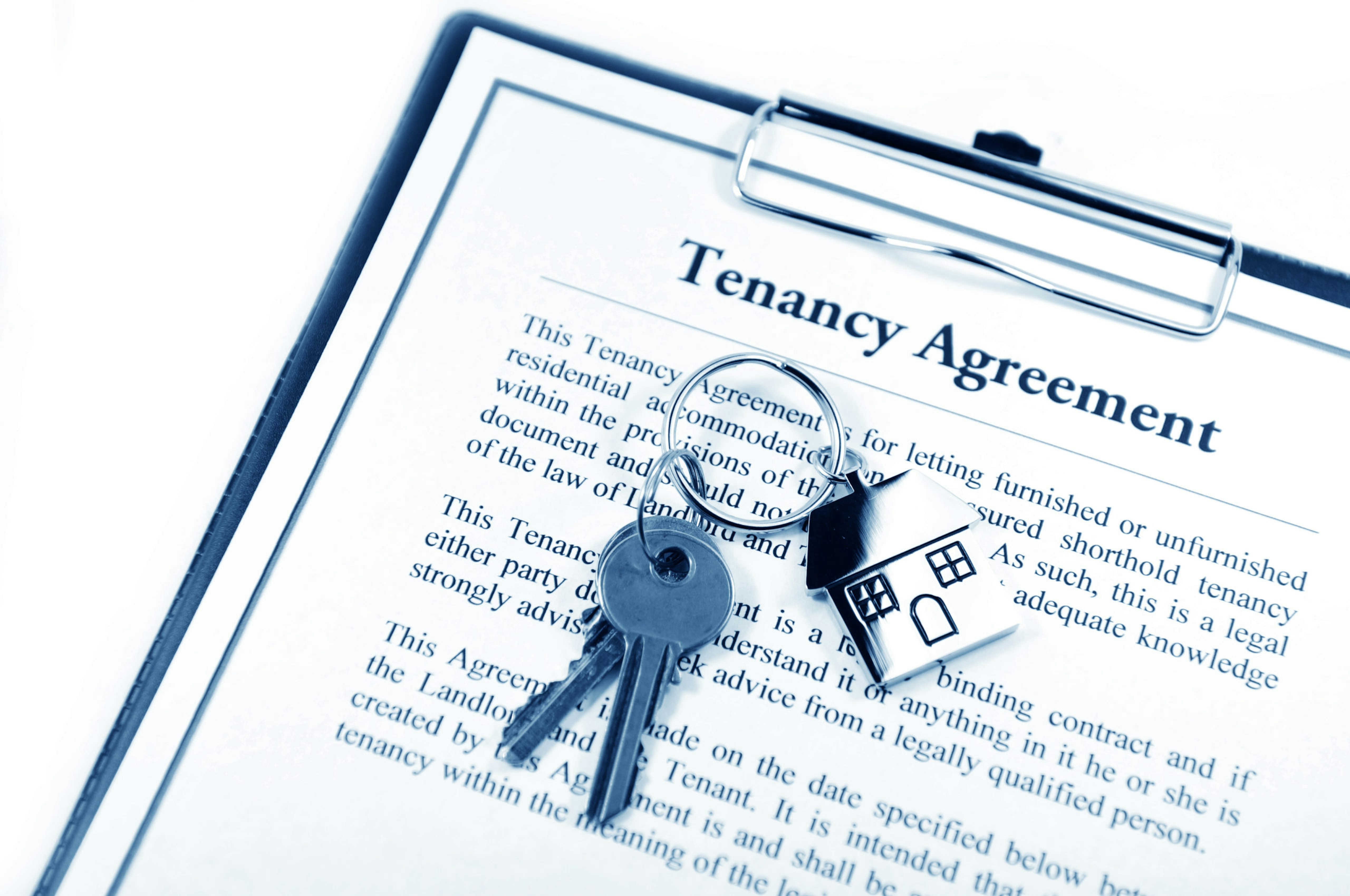What is a Section 8 notice?
A Section 8 notice can be used to evict tenants, but they can only be issued in certain cases. Here, we look at Section 8 notices in more detail and the circumstances in which they can be used.
By Alan Boswell Group

Under the Housing Act 1988, a Section 8 notice can be used to end a shorthold tenancy before the contract comes to an end. It’s also known as an eviction notice.
Section 8 notices can only be issued if tenants have broken the rules of their tenancy in some way, for example, if tenants:
Are behind in their rent.
Have damaged the property.
Gained the tenancy by providing false information about themselves.
Become a nuisance to neighbours.
Have used the property for criminal activities.
In total, there are 17 reasons (or ‘grounds for possession’) listed on a Section 8 notice that landlords can choose from. These are divided into two groups:
What are the mandatory grounds for possession under a Section 8 notice?
The mandatory grounds for possession are grounds one to eight. These are the most ‘concrete’ reasons for eviction and in most cases, mandatory grounds for possession leads to eviction. Typical reasons include rent arrears or if the property is being repossessed by the mortgage lender.
Ground 1 - The owner (or their spouse) lived in the property at some point before the tenancy began, and now wants to live in it themselves again.
Ground 2 - The mortgage lender requires the property to be vacant so that they can sell it. The mortgage must've been set up prior to when the tenancy began.
Ground 3 - The property was previously used as a holiday let, and has since been occupied under a short-term tenancy for less than eight months, and the property is being returned to use as a holiday let.
Ground 4 - Where the property is owned by an educational institution and has been let to a student for a fixed term of up to 12 months.
Ground 5 - Where the property is owned by a religious organisations and is required for a minister of religion to live in.
Ground 6 - Repossession is required as the landlord intends to demolish or substantially remodel / reconstruct the property and this cannot be done whilst the tenant is living there.
Ground 7 - Where the tenant has passed away, the landlord can start proceedings for repossession of the property within 12 months of the death of the former tenant. This cannot be used if there is a surviving spouse living at the property.
Ground 7A - One of the following five conditions regarding anti-social behaviour have been met: conviction of a serious offence, breach of an injunction to prevent nuisance or annoyance (IPNA), breach of a criminal behaviour order, closure order, noise nuisance.
Ground 7B - The Home Office has notified the landlord that one, or more, of the tenants have no right to rent due to their immigration status.
Ground 8 - Can be used where the tenant is in more than eight weeks of rent arrears if rent is paid weekly or fortnightly, two months of rent arrears if paid monthly, three months of rent arrears if paid quarterly or annually.
What are the discretionary grounds for possession under a Section 8 notice?
The discretionary grounds for possession are listed from number 9 to 17 and (as the name suggests) are more subjective – for example damage to property. In these instances, landlords will state the reason for eviction, but the court will ultimately decide whether those reasons are valid.
Ground 9 - The landlord has provided the tenant with suitable alternative accommodation, on a like-for-like basis as the current tenancy.
Ground 10 - The rent arrears are less than the terms specified in Ground 8.
Ground 11 - The tenant is persistently late in paying rent, there doesn't necessarily have to be any rent arrears at the time of starting court proceedings.
Ground 12 - Any other breach of the terms of the tenancy agreement, aside from in relation to rental payments.
Ground 13 - The property has been damaged or neglected due to the tenant, or someone else they have allowed to be in the property.
Ground 14 - The tenant is deemed to be a 'nuisance' to neighbours or is using the property for illegal or immoral activity.
Ground 15 - The tenant has caused damage to the furniture in the property that was provided by the landlord.
Ground 16 - The tenant was renting the property whilst an employee of the landlord, and that employment has now ended.
Ground 17 - The tenant is deemed to have been granted tenancy on the basis of a 'false statement' that they made to the landlord on application.
When can a Section 8 notice be issued?
Section 8 notices can be issued at any point in a tenancy, but the reasons must be valid.
Some of the grounds for possession in a Section 8 notice are similar but could be classed either as a mandatory reason or a discretionary reason. This can be an important distinction and could affect the outcome of the notice.
For example, Section 8 notices are typically served when tenants are in arrears. For this to be considered a mandatory reason for possession, those payments need to be late by:
2 months if rent is paid monthly.
8 weeks if rent is paid weekly.
3 months if rent is paid quarterly or annually.
Landlords can still issue a Section 8 notice for rent arrears if the payments aren’t as late as the thresholds set out, but this would be considered a discretionary ground for possession instead. It would then be up to the court to decide whether it was a fair and valid reason.
Can there be more than one reason for issuing a Section 8 notice?
Yes, landlords can list more than one ground for possession on a Section 8 notice.
If we take the issue of rent arrears again, if a tenant were three months late on payments, the landlord could issue three grounds for possession:
Ground 8 – rent arrears of more than 2 months.
Ground 10 – rent arrears regardless of the threshold.
Ground 11 – consistently late rental payments.
Ground 8 is the only mandatory reason. In many cases, this could lead to eviction. However, if the tenant were able to pay back one month’s worth of rent, they would be below the threshold for mandatory grounds for possession.
This leaves grounds 10 and 11 – both discretionary reasons for possession. In these instances, the court will take other circumstances into consideration to decide whether or not the tenant should be evicted. For instance, if the tenant had lost their job or there had been delays in Housing benefit payments.
Based on these extenuating circumstances, the court might decide to let the tenant stay in the property – especially if they had shown they were also trying to pay back what they owe.
How do you serve a Section 8 notice correctly?
Crucially, Section 8 notices are only valid if they are completed and issued correctly. Landlords will also need to use the most up-to date form which can be found at GOV.UK, assured tenancy forms (form 3).A Section 8 eviction notice is really the final step in the process. Before a Section 8 is issued, landlords should send tenants regular reminders of the reasons why they’re breaking tenancy rules.
It’s recommended that these reminders be sent on a weekly basis. Landlords should also clearly set out what the breach of rules are. If the issue is rent, it’s a good idea for landlords to include the amount of rent owed.
Section 8 notices also need to be given to the tenant in a certain way – this may be specified in the tenancy agreement and can include:
Handing the notice to the tenant.
Delivering the notice by post.
Putting the notice through the letterbox.
How long does a Section 8 notice take?
The date that tenants need to leave a property by should be clearly shown on the notice – it should be a minimum of 2 weeks.
Who should the Section 8 notice be addressed to?
All tenants must be named on the Section 8 notice – they will also need to be spelt correctly. Landlords should also include the names of all the tenants on the agreement, even if they have since moved out.
If there are several tenants, each one should be issued with a notice.
Are there any alternatives to a Section 8 notice?
If landlords want to regain possession of a property at the end of a tenancy, they can issue a Section 21 notice.
If the tenancy is on a rolling contract and there is no set end date, tenants must be given at least two months’ notice to leave.
Need help with your insurance?
Whether you need a quote, have a general enquiry, or want to talk it through over the phone, we're here to help.
What's the difference between Section 8 and Section 21 notices?
A Section 8 notice is designed to end a tenancy before the contracted end date. These notices are also issued when there has been a breach in the tenancy agreement.
On the other hand, a Section 21 notice is a formal recognition that the landlord wants the property back at the end of the tenancy. They’re often referred to as ‘no-fault evictions’ but technically they aren’t evictions, it’s simply that tenants are asked to leave at the end of their tenancy.
For more information and ways to ensure Section 21 notices are valid, head to our Section 21 guide.
Can a Section 8 notice be challenged?
In short, yes – tenants can challenge a Section 8 notice (officially known as defending possession).Section 8 notices can be challenged if the reasons set out aren’t valid or if any details are incorrect, for example if names are misspelt.
What happens if tenants refuse to leave after a Section 8 is issued?
If tenants don’t leave by the date set out in the notice, landlords can formally begin a ‘possession claim’ and take tenants to court.
If this happens, court papers will be sent, and the landlord will have the opportunity to list their reasons for possession and tenants their reasons for defending it.
The next step is a review of all the paperwork sent by both parties. If this is all in order, a formal possession hearing in court will be scheduled and a decision will usually be made on the same day.
If the court rules that tenants must leave, they’ll be given a minimum of 14 days to do so.
How landlords can minimise financial loss
For landlords, dealing with defaulting tenants and the expense of eviction can be stressful. However, the financial impact can be tempered with suitable cover. For instance, rent guarantee insurance can help recoup rent arrears and legal expenses can cover the cost of professional advice and court fees.
Guidance for landlords
At Alan Boswell, we appreciate that unforeseen circumstances can have a huge impact on tenancies. Our five-star rated insurance services can help landlords deal with the unexpected.
Policies cover a wide range of events and can be tailored to suit specific needs. For more information on the services we offer, head to our landlord insurance hub or call a member of the team on 01603 216399.
Related guides and insights

What is a Section 8 notice?
Here, we look at Section 8 notices in more detail and the circumstances in which they can be used. For example, Section 8 notices are typically served when tenants are in arrears.

Guide to landlord responsibilities
What are the legal responsibilities and obligations of a private landlord? Read our complete guide.

Landlord's responsibilities for pest control
Whether you are a landlord or a tenant, it’s not a pleasant experience dealing with a pest infestation. We look at landlord's and tenant's responsibilities for pest control.

Landlord responsibilities: guide to fixtures and fittings
Fixture or fitting? When you’re a landlord, it pays to know the difference between the two. In this article, we look at the difference between fixtures and fittings, what landlords are responsible for and the best insurance for both.
